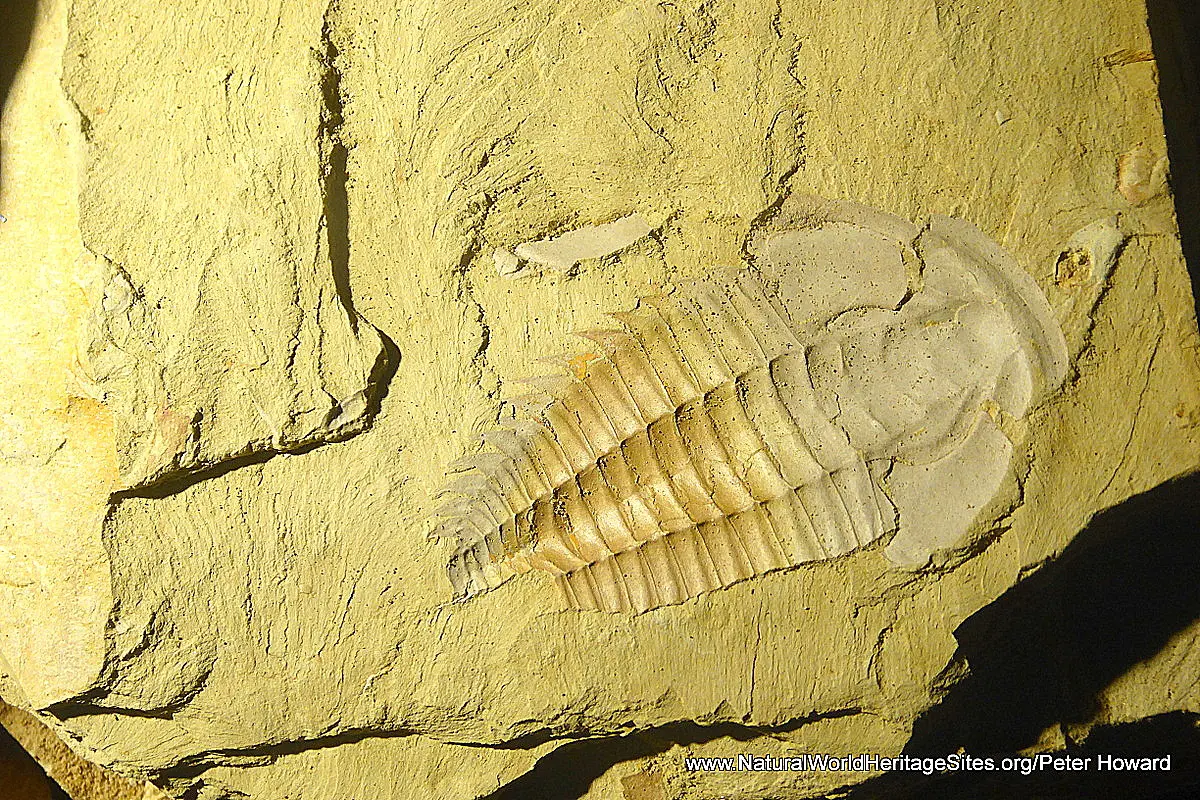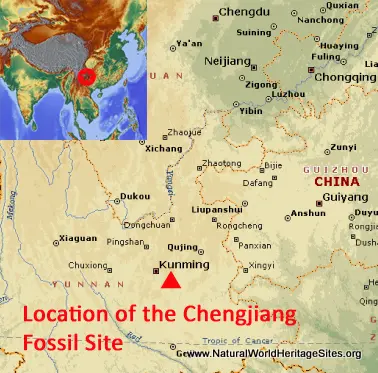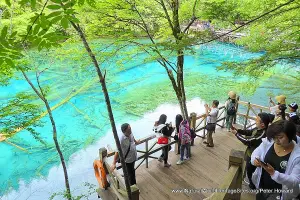EXPLORE CHINA’S CHENGJIANG FOSSIL SITE with this slideshow, check the location map and get all the facts and information below.
For slideshow description see right or scroll down (mobile). Click to view slideshow
Location and Values: The Chengjiang Fossil Site protects an outstanding variety of fossils from the earliest part of the Cambrian period, about 530 million years ago. These include nearly 200 species of marine animals, illustrating the rapid diversification of life on Earth at this time. They are exceptionally well preserved, showing hard and soft tissues, and stages in the development of the world’s first vertebrates.
The site is particularly important because it shows the complexity of a marine ecosystem, with a wide range of different species adapted to particular ecological niches and positions in complex food webs that included sophisticated predators.
Conservation Status and Threats. According to IUCN’s most recent Conservation Outlook Assessment (December 2020) the conservation status of the Chengjiang Fossil Site is considered to be ‘good’. The exceptional values which are recognized by the site’s inscription on the World Heritage List are not seriously threatened, but a number of issues affecting its conservation are noteworthy, including:
- Illegal collection of fossils. The Chengjiang Fossil Site is well protected by video surveillance and other means, so Illegal fossil collecting within the site is not a significant threat. However, similar locations nearby have been subject to some illegal collecting and Chengjiang fossils are offered for sale in international markets. The loss of any fossils into private hands represents a potential loss to scientific advancement.
- Mining site restoration. As with many of the world’s best fossil sites, the Chengjiang Fossil Site became known to science as a result of fossil discoveries made during mining operations. In this case phosphate mining continued in the site’s buffer zone until 2004 and the process of mine rehabilitation now underway will take many years to complete. Land restoration within the site was started in 1997 with plantations of exotic trees, but this rehabilitation process is now being continued with native species.
- Development of visitor infrastructure. Chengjiang Fossil Site is attracting a growing number of visitors, currently about 60-80,000 annually, which is expected to grow to about 100,000 over the next few years. A small museum and walkway was built over the excavation site that provided the first important fossil discoveries, but new visitor facilities are now being located outside the site so as to minimize further unnecessary visitor impacts to the site itself.
Links:
Google Earth
Official UNESCO Site Details
IUCN Conservation Outlook
UNEP-WCMC Site Description
Slideshow description
Slideshow Description: The photos in this slideshow are intended to ‘tell the story’ of the small Chengjiang Fossil Site. They show the landscape features of the site, which was only ‘discovered’ in 1984, and covers an area of forested hills surrounded by areas of intensive agriculture and former phosphate mines undergoing ecological restoration. The photos cover the main area of public access, where an excellent small museum has been erected over an exposed rock-face where the first significant fossil find was made in 1984. The museum exhibits are shown, including the natural rock strata and an illuminated glass walkway at its base where visitors can view a selection of real fossils lying ‘in situ’ amongst fallen rock debris. Exhibits within the museum include explanatory panels as well as large back-lit photos of some of the key fossils with life-like 3D-models of each creature below. This page of the website is still under development and a more detailed description of the various aspects of the site which are illustrated in the slideshow will be included in due course – so please come back again soon!
Factfile
Website Category: The Fossil Record
Area: 5 km2
Inscribed: 2012
Criteria:
- Fossil record (viii)





